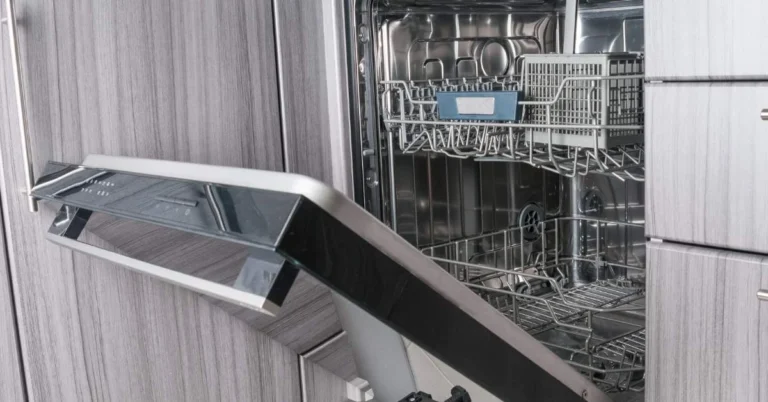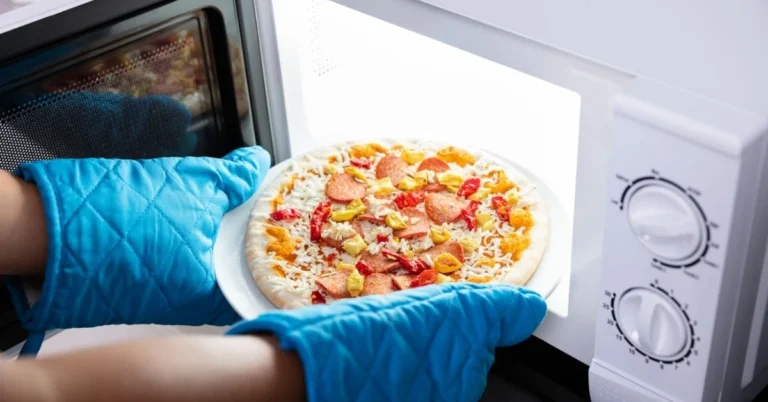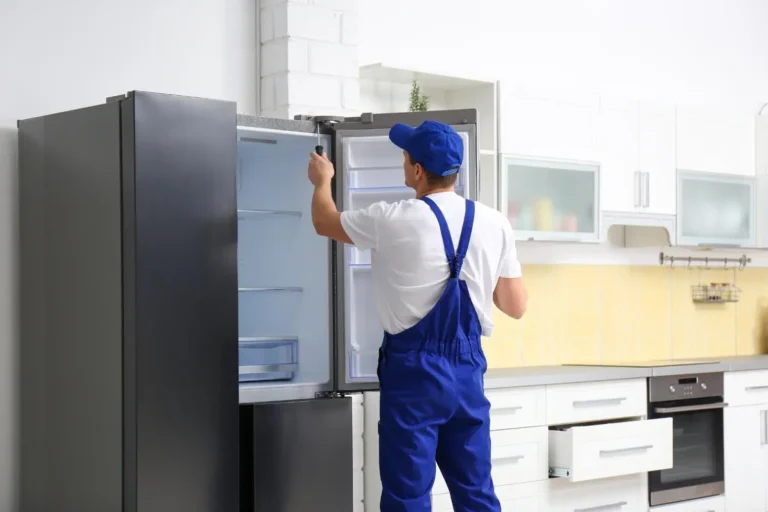Your stove stops heating properly, and it is more than just an inconvenience. With the global home appliance repair market projected to reach $15.6 billion by 2030, it’s clear that many are opting to repair rather than replace their appliances.. It is a roadblock to preparing meals. This common issue can affect both gas and electric stoves and often stems from a few manageable causes. For electric models, a faulty heating element or a loose connection might be the culprit. In gas stoves, the problem might lie with a clogged burner, a malfunctioning igniter, or issues with the gas supply.
Begin with simple steps, such as checking for visible damage to burners or elements, cleaning away food debris, and ensuring all connections are secure. If these quick fixes don’t restore your stove’s performance, read on to discover more advanced troubleshooting steps that could save you from an expensive repair call.
Understanding the Difference Between Gas and Electric Stoves
Both gas and electric stoves have their own unique set of potential issues when they stop working, from ignition problems with gas burners to electrical faults in electric cooktops. Knowing the type of stove you have can help you identify the problem faster. Continue reading to learn the specific troubleshooting steps you can take to get your stove back up and running.
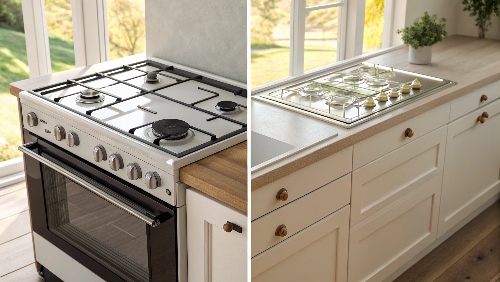
Common Reasons Why Your Electric Stove Won’t Turn On
An electric stove that won’t turn on can disrupt your entire day. Whether you’re preparing a quick meal or hosting dinner, having a non-functioning cooktop is inconvenient. Fortunately, many causes behind this issue are common and often easy to troubleshoot. Below are several potential reasons why your stove may not be working, along with suggestions on how to address each issue.
Power Supply Issues
Start by confirming the stove is receiving power. Check if the plug is securely connected or if the stove is hardwired, and make sure the circuit breaker is in the correct position. A tripped breaker or a blown fuse can cut off electricity to the appliance. You can also test the outlet by plugging in another device. If it doesn’t work either, the issue may lie with the outlet or the circuit. These are basic checks, but they often solve the problem quickly.
Faulty Heating Elements
If the stove turns on but one or more burners remain cold, the heating element may be worn out. Burners can fail over time, especially with frequent or high-heat use. Look for signs of damage, such as discoloration or blistering. You can test a questionable burner by swapping it with a working one. If the replacement heats properly, the original burner likely needs to be replaced. Most elements are easily removable and replaceable with basic tools.
Defective Burner Switch
When a burner stays stuck at one heat level or doesn’t work at all, the burner switch might be malfunctioning. This switch controls the amount of power supplied to the burner, depending on your selected setting. A faulty switch can interrupt power flow, preventing the element from heating. Replacing a switch involves opening the control panel and disconnecting wires, so if you’re not familiar with electrical repairs, it’s a good idea to call a technician.
Internal Wiring Issues
Loose or damaged internal wires can also prevent your stove from working. Over time, heat and usage can cause internal wiring to degrade or come loose. This may result in intermittent power or a complete failure to turn on. Signs of internal wiring problems include buzzing noises, burning smells, or visible scorching. Because of the fire risk, it is best to avoid using the stove and have a professional inspect the unit as soon as possible.
Control Board Malfunctions
In modern electric stoves, the control board is the central component that manages power distribution and electronic functions. If the stove is unresponsive, the control board might be the issue. These boards can fail due to age, power surges, or internal defects. Diagnosing the board typically requires specialized tools and expertise, so it’s recommended to contact a qualified appliance repair specialist. Replacing a control board can restore all stove functions if other parts are working correctly.
Common Reasons Why Your Gas Stove Won’t Turn On
Gas stoves are a staple in kitchens across the country, offering reliable performance and precise temperature control. However, when your gas stove isn’t turning on, it can be frustrating and disrupt your cooking routine. Fortunately, many issues that cause a gas stove to stop working are easy to fix. Whether you’re dealing with a simple problem or something more complex, we’ve outlined the most common reasons your stove might not be turning on and how to solve them.
1. Gas Supply Problems
If your stove isn’t lighting, one of the first things to check is whether the gas supply is turned on. It’s easy for the valve to be accidentally shut off, whether by you, a family member, or a recent move. Sometimes, the gas may have been turned off as a precaution or due to maintenance.
How to Fix It:
To check the gas supply, locate the gas valve behind your stove and make sure it’s fully open. If it was turned off, simply rotate the valve handle until it aligns with the gas line. If the stove still doesn’t turn on, proceed with further troubleshooting.
2. Faulty Igniter
A malfunctioning igniter is one of the most common reasons your gas stove won’t light. The igniter is responsible for sparking the flame when you turn the burner knob, but it can get dirty, wet, or wear out over time.
How to Fix It:
Inspect the igniter for any visible dirt or moisture. If the igniter is wet (especially after cleaning), allow it to dry for several hours. If it’s dirty, use a soft brush or cloth to gently clean it. If the igniter is still not working, you may need to replace it.
3. Clogged Burner Ports
A clogged burner port can affect the flow of gas to the burner, resulting in a weak or inconsistent flame. This issue often happens if grease, food debris, or dust builds up over time, obstructing the burner’s ports.
How to Fix It:
To clear clogged burner ports, remove the burner caps and use a small brush or a pin to clear any debris. You can also use warm, soapy water to clean the area around the burner. Be sure to dry the burner thoroughly before using it again to avoid moisture affecting the igniter. Repairing a gas stove typically costs between $150 and $400, depending on the specific issue and parts required. Knowing this can help you decide whether to try fixing it yourself or call a professional if the issue seems more complex
4. Electricity Issues
If your gas stove has an electric igniter or other electrical components, a power issue may be the culprit. A tripped circuit breaker, power surge, or loose wiring can prevent your stove from turning on, especially if the igniter requires electricity to spark.
How to Fix It:
Check your home’s circuit breaker and reset it if necessary. If your stove has an electric ignition system, ensure that it’s properly plugged in. If there are no issues with the breaker or wiring and your stove still isn’t working, it may be time to contact a professional for further inspection.
5. Spark Module Issues
The spark module is the component that supplies power to the igniter. If it’s faulty or damaged, you might hear the usual clicking sound, but no spark will be generated, preventing the stove from lighting.
How to Fix It:
Unfortunately, spark modules can’t usually be repaired by the homeowner. If you suspect a problem with the spark module, contact a licensed technician to replace it.
6. Pilot Light Is Out
If your stove uses a pilot light, it may go out, which can prevent the burners from lighting. This is a common issue in older gas stoves or those without an electronic igniter. If the pilot light is out, it’s essential to approach this issue with caution, as improper handling could result in a gas leak.
How to Fix It:
If your stove has an electric igniter, resetting the breaker may fix the issue. For stoves with a manual pilot light, do not attempt to relight it yourself unless you are experienced. Turn off the gas supply, wait for the gas to dissipate, and call a professional to relight the pilot light safely.
Get Your Stove Working Again with Beach2Bay Appliance Service
Having trouble with your stove? Whether it’s a gas or electric model, Beach2Bay Appliance Service is here to help you troubleshoot and fix the issue quickly. Don’t let stove problems ruin your meals. For more, contact us today and get your kitchen back in action! Our expert team will diagnose the issue and provide reliable repair solutions.
Frequently Asked Questions
How do I know if my stove fuse is blown?
If your stove isn’t turning on at all or certain functions aren’t working, a blown fuse could be the cause. You may notice that there are no lights, no heat, or completely unresponsive controls. To check, unplug the stove and look for a blackened or broken fuse inside the fuse holder, usually located behind a panel. If it looks damaged or burnt, it likely needs to be replaced.
Why is my stove not lighting but clicking?
A clicking sound usually means the igniter is trying to spark, but it’s not lighting the burner. This can happen if the burner cap is out of place, there’s moisture around the igniter, or food debris is blocking the gas flow. Try drying the area, cleaning the burner, and ensuring everything is properly aligned. If it still won’t light, the igniter might be faulty.
How to fix a stove burner that won’t light?
First, ensure that the burner cap is appropriately positioned and free from dirt or moisture. Clean any food debris or grease that might be blocking the gas ports. Make sure the igniter is sparking when you turn the knob—if not, it may need to be replaced. If it’s a gas stove and you don’t smell gas, there might be an issue with the gas supply.
Author Profile
- John Raymond Hagler
- Beach2Bay Appliances is a trusted name in Florida for professional appliance repair services. Serving homeowners, realtors, and property managers, our experienced team focuses on reducing costly breakdowns and maximizing appliance efficiency. Committed to reliability, transparency, and customer care, we help maintain the value and functionality of homes and rental properties through routine service and urgent repairs.
Latest entries
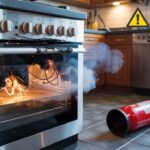 BlogsAugust 30, 2025Oven Smells Like Burning While Cooking? Here’s the Solution
BlogsAugust 30, 2025Oven Smells Like Burning While Cooking? Here’s the Solution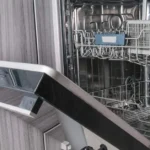 BlogsAugust 29, 2025Why Your Dishwasher Isn’t Cleaning Dishes and How to Fix It
BlogsAugust 29, 2025Why Your Dishwasher Isn’t Cleaning Dishes and How to Fix It BlogsAugust 29, 20257 Reasons Your Microwave Isn’t Working and How to Fix It Quick
BlogsAugust 29, 20257 Reasons Your Microwave Isn’t Working and How to Fix It Quick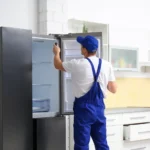 BlogsAugust 27, 2025Why Your Refrigerator Isn’t Cooling and How to Fix It
BlogsAugust 27, 2025Why Your Refrigerator Isn’t Cooling and How to Fix It

